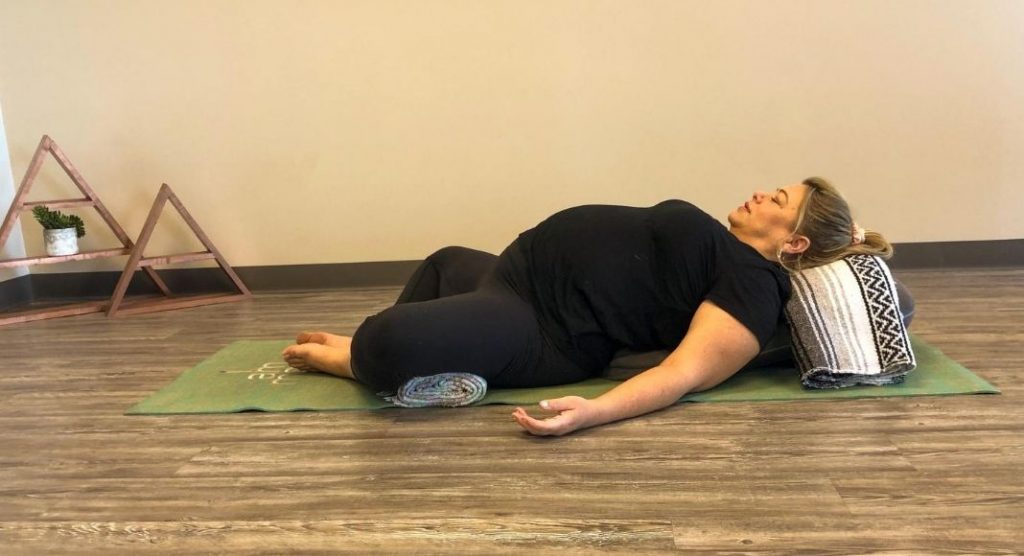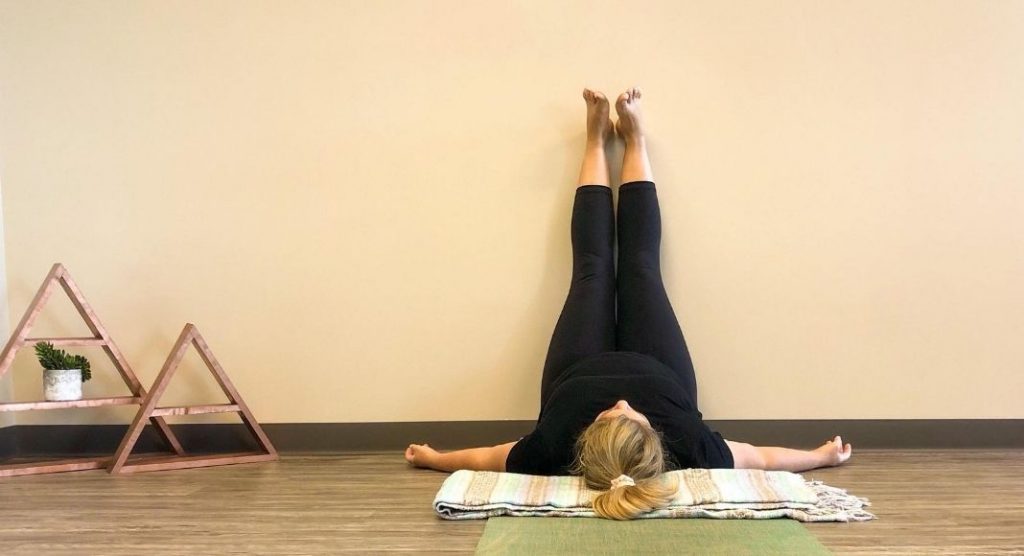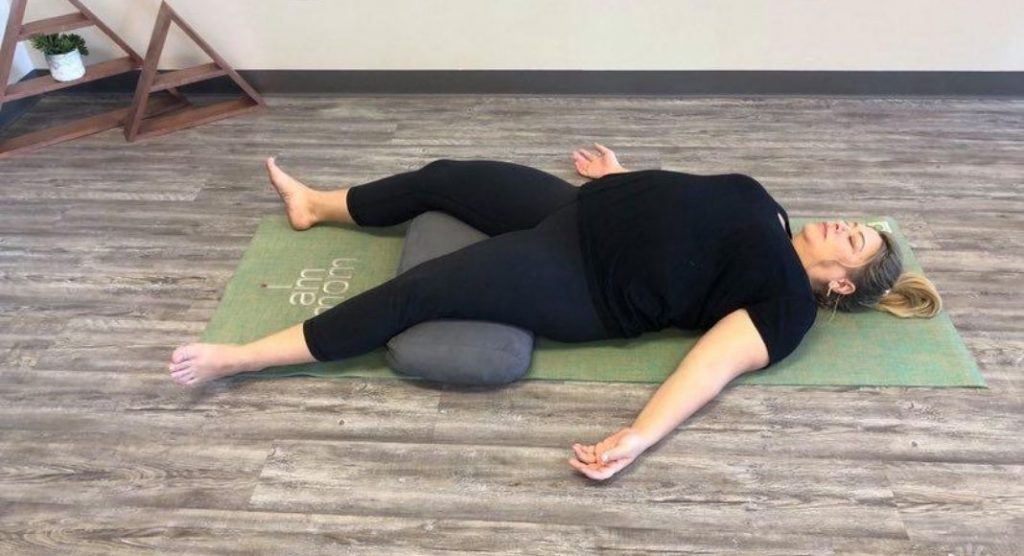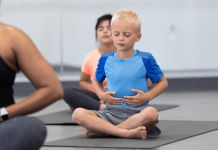National Relaxation Day is August 15
Taking a moment to relax sounds almost frivolous, doesn’t it? Well, let me reassure you, Mama, that it most certainly is not.
Taking the time to rest and relax is beyond beneficial to a tired mama who has about 9,956 things piled up on her plate. I know that I’m not just speaking for myself that this season of world-wide pandemic, social injustice, mudslinging, distance learning, social distancing, uncertainty, and no cleaning wipes to be found is overwhelming, and energy depleting to say the least. When we are depleted like this, the cup that we pour from to take care of our families runs dry. Perhaps you, like me, have found yourself going through the motions of the day but not really present to it.
Giving 20 minutes of our day that is dedicated to rest and relaxation is mission critical to keep our cups full so that we can continue to pour out for our family. Judith Lasiter, an internationally known yoga teacher, author, mother and grandmother says that we should actually keep our cup so full that it overflows and what we pour out from is the saucer. As a yoga teacher myself, I have studied extensively the benefits of rest and relaxation. I’m here to tell you, Tired Mama, that taking time to rest is not selfish or a waste of time.
In our modern society of being on the go, busy, distracted, and on information overload, we tend to live in our sympathetic nervous system. This is the Fight or Flight Mode. We obviously need this for survival and safety, but when we spend too much time with an active sympathetic nervous system (SNS), our body gets stressed out. We can experience tension in the neck & shoulders, high-blood pressure, brain fog, GI distress, and more. All this leads to us being in a bad mood.
The opposite of SNS is the parasympathetic nervous system (PNS). This is the state of rest and digest. When we settle into the PNS, blood pressure, breathing rate and hormone flow return to normal levels as the body settles into homeostasis, or equilibrium. While the two sides of the nervous system work together to maintain a baseline, periodically dropping into the deeper state of the PNS reduces the effects of stress on the body, mind and spirit.
Restorative Yoga is the art of purposeful rest and relaxation as it supports our nervous system and aids in reducing the overall level of stress we feel in our daily lives. Naturally, life will continue to move at a rapid pace all around us. There’s going to be noise and distraction, the pandemic doesn’t seem to be going anywhere anytime soon, our children will go on making messes and being loud. However, I promise that by taking a twenty-minute daily retreat will provide the exact right amount of peace we need. One of my favorite sayings is that peace does not mean to be in a place where there is no noise, trouble, or hard work. It means to be in the midst of those things and still be calm in the heart. This is the powerful impact of carving out time to renew.
So, what is this art of relaxation? Can’t I just lay down and take a nap? You could, but honestly, how many times have you taken a quick nap and woken up feeling worse than when you laid down? We are all different and our bodies have different needs, but for a lot of us, 20 minutes isn’t as refreshing as the studies claim. Typically, we are waking up right when we would be going into deep sleep and so we wake up cranky. Restorative Yoga, despite one of my students calling it Nap Class, is not a nap, but more like a suspension between the worlds of awake and asleep. You remain conscious throughout but the world seems to melt away. Each pose uses certain props to support the body in a nurturing feeling of being held in order to facilitate maximum relaxation. Here are three of my favorite Restorative Yoga postures and the props needed to do them. Not everyone has “official” yoga props at home, but we can get really creative with what we do have.
Supta Baddha Konasana – Reclined Bound Angle Pose
 This pose requires a couch bolster or a firm pillow (or two softer ones), two large towels, one small towel, one blanket, and an eye pillow or a light scarf (optional). Place the pillow on the floor so that when you lay down the pillow will support your upper body. If using two soft pillows, stack them. Fold each large towel lengthwise and then roll them up. Fold the smaller towel in a way that it can be used under the head for additional support or elevation. Recline back on the pillow and bring the bottoms of the feet together as the knees fall open and away from each other. Use the rolled-up towels under each knee for support. The smaller towel goes under the head for support. The eye pillow or scarf goes over the eyes. If using a scarf, you could wrap around the head with a light pressure. Let the arms relax alongside the body. Breath into the belly. Stay for 15 minutes.
This pose requires a couch bolster or a firm pillow (or two softer ones), two large towels, one small towel, one blanket, and an eye pillow or a light scarf (optional). Place the pillow on the floor so that when you lay down the pillow will support your upper body. If using two soft pillows, stack them. Fold each large towel lengthwise and then roll them up. Fold the smaller towel in a way that it can be used under the head for additional support or elevation. Recline back on the pillow and bring the bottoms of the feet together as the knees fall open and away from each other. Use the rolled-up towels under each knee for support. The smaller towel goes under the head for support. The eye pillow or scarf goes over the eyes. If using a scarf, you could wrap around the head with a light pressure. Let the arms relax alongside the body. Breath into the belly. Stay for 15 minutes.
Viparita Karani – Legs Up the Wall
 This pose requires a couple of towels or a folded-up blanket and an eye pillow or light scarf. Fold up the towels or blanket. One towel would go under the hips for comfort and support and the other will go under the head. Sit on the floor to the side of a folded blanket placed near the wall. In one big motion, turn to face the wall, leaning back and swinging the legs up the wall. The hips, spine and head rest on the floor. The legs are positioned straight up the wall. If your hamstrings are tight, you can scoot your bottom further away from the wall. Just like in Supta Baddha Konasana, the eye pillow or scarf can be used in the same way described above. Let your arms rest alongside the body and breath into the belly. Stay for 15 minutes.
This pose requires a couple of towels or a folded-up blanket and an eye pillow or light scarf. Fold up the towels or blanket. One towel would go under the hips for comfort and support and the other will go under the head. Sit on the floor to the side of a folded blanket placed near the wall. In one big motion, turn to face the wall, leaning back and swinging the legs up the wall. The hips, spine and head rest on the floor. The legs are positioned straight up the wall. If your hamstrings are tight, you can scoot your bottom further away from the wall. Just like in Supta Baddha Konasana, the eye pillow or scarf can be used in the same way described above. Let your arms rest alongside the body and breath into the belly. Stay for 15 minutes.
Savasana – Corpse Pose
 This pose requires little to zero props. Lay down on the floor with the feet separated about 2 feet away from each other. Arms relax alongside the body, palms facing up. If the low back feels sensational in any way, use a rolled-up towel or blanket under the thighs to create a cradled effect. The objective is to have maximum length in the spine, so I advise against using a pillow under the head, however, to give just a bit of cushion to the back of the head, a folded towel is fine. As in the previous poses, the eye pillow or scarf will be used in the same way. Breathe into the belly. Stay for 15 minutes.
This pose requires little to zero props. Lay down on the floor with the feet separated about 2 feet away from each other. Arms relax alongside the body, palms facing up. If the low back feels sensational in any way, use a rolled-up towel or blanket under the thighs to create a cradled effect. The objective is to have maximum length in the spine, so I advise against using a pillow under the head, however, to give just a bit of cushion to the back of the head, a folded towel is fine. As in the previous poses, the eye pillow or scarf will be used in the same way. Breathe into the belly. Stay for 15 minutes.
If you only have 20 minutes, choose only one pose. If you have an hour, do all three. Stay in each pose for about 15 minutes. If you have time for more than one pose, give yourself a 5-minute gap between poses to come out of the posture with ease and care, a moment to pause and reflect about the experience, and then time to set up for the next one. When ready to come out of each posture, roll to the side in a fetal posture. Pause there for a minute or so and then make way to a comfortable seated position.
How to make an eye pillow – Fill a sock with rice or beans and tie the opening of the sock off with a knot. Do you have little bean bags? Use those. Do you have a favorite rock or crystal? Place it on the belly or on the sternum. Have any river rocks in the back yard? Grab two of similar size & weight and let them rest on open palms.
Whatever you do to find rest and relaxation, I hope you will make it a priority to take time to yourself to rejuvenate your spirit. Restorative Yoga is just one way, but since it’s National Relaxation Day, why don’t you give it a try. Sometimes the hardest thing to do is rest and relax but it’s the hardest work that comes with the greatest reward.


















